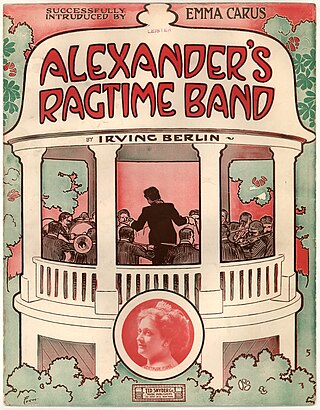| # | Title | Release date |
|---|
| 1 | Colonel Heeza Liar in Africa | November 23, 1913 |
| 2 | Colonel Heeza Liar's African Hunt | January 10, 1914 |
| 3 | Colonel Heeza Liar Shipwrecked | March 14, 1914 |
| 4 | Colonel Heeza Liar in Mexico | April 18, 1914 |
| 5 | Colonel Heeza Liar, Farmer | May 18, 1914 |
| 6 | Colonel Heeza Liar, Explorer | August 15, 1914 |
| 7 | Colonel Heeza Liar in the Wilderness | September 26, 1914 |
| 8 | Colonel Heeza Liar, Naturalist | October 24, 1914 |
| 9 | Colonel Heeza Liar, Ghost Breaker | February 6, 1915 |
| 10 | Colonel Heeza Liar in the Haunted Castle | February 20, 1915 |
| 11 | Colonel Heeza Liar Runs the Blockade | March 20, 1915 |
| 12 | Colonel Heeza Liar and the Torpedo | April 3, 1915 |
| 13 | Colonel Heeza Liar and the Zeppelin | April 10, 1915 |
| 14 | Colonel Heeza Liar Signs the Pledge | May 8, 1915 |
| 15 | Colonel Heeza Liar in the Trenches | May 13, 1915 |
| 16 | Colonel Heeza Liar at the Front | May 16, 1915 |
| 17 | Colonel Heeza Liar, Aviator | May 22, 1915 |
| 18 | Colonel Heeza Liar Invents a New Kind of Shell | June 5, 1915 |
| 19 | Colonel Heeza Liar, Dog Fancier | July 10, 1915 |
| 20 | Colonel Heeza Liar Foils the Enemy | July 31, 1915 |
| 21 | Colonel Heeza Liar, War Dog | August 21, 1915 |
| 22 | Colonel Heeza Liar at the Bat | September 4, 1915 |
| 23 | Colonel Heeza Liar, Nature Faker | December 28, 1915 |
| 24 | Colonel Heeza Liar's Waterloo | January 6, 1916 |
| 25 | Colonel Heeza Liar and the Pirates | March 5, 1916 |
| 26 | Colonel Heeza Liar Wins the Pennant | April 27, 1916 |
| 27 | Colonel Heeza Liar Captures Villa | May 25, 1916 |
| 28 | Colonel Heeza Liar and the Bandits | June 22, 1916 |
| 29 | Colonel Heeza Liar's Courtship | July 20, 1916 |
| 30 | Colonel Heeza Liar on Strike | August 17, 1916 |
| 31 | Colonel Heeza Liar Plays Hamlet | August 24, 1916 |
| 32 | Colonel Heeza Liar Bachelor Quarters | September 14, 1916 |
| 33 | Colonel Heeza Liar Gets Married | October 11, 1916 |
| 34 | Colonel Heeza Liar, Hobo | November 15, 1916 |
| 35 | Colonel Heeza Liar at the Vaudeville Show | December 21, 1916 |
| 36 | Colonel Heeza Liar on the Jump | February 4, 1917 |
| 37 | Colonel Heeza Liar, Spy Dodger | March 19, 1917 |
| 38 | Colonel Heeza Liar's Temperance Lecture | August 20, 1917 |
| 39 | Colonel Heeza Liar's Treasure Island | December 17, 1922 |
| 40 | Colonel Heeza Liar and the Ghost | January 14, 1923 |
| 41 | Colonel Heeza Liar, Detective | February 1, 1923 |
| 42 | Colonel Heeza Liar's Burglar | March 11, 1923 |
| 43 | Colonel Heeza Liar in the African Jungles | June 3, 1923 |
| 44 | Colonel Heeza Liar in Uncle Tom's Cabin | July 8, 1923 |
| 45 | Colonel Heeza Liar's Vacation | August 5, 1923 |
| 46 | Colonel Heeza Liar's Forbidden Fruit | November 1, 1923 |
| 47 | Colonel Heeza Liar, Strikebreaker | December 1, 1923 |
| 48 | Colonel Heeza Liar's Mysterious Case | February 1, 1924 |
| 49 | Colonel Heeza Liar's Ancestor | March 1, 1924 |
| 50 | Colonel Heeza Liar's Knighthood | April 1, 1924 |
| 51 | Colonel Heeza Liar, Sky Pilot | May 1, 1924 |
| 52 | Colonel Heeza Liar, Daredevil | June 1, 1924 |
| 53 | Colonel Heeza Liar's Horseplay | July 1, 1924 |
| 54 | Colonel Heeza Liar, Cave Man | August 1, 1924 |
| 55 | Colonel Heeza Liar, Bull Thrower | September 1, 1924 |
| 56 | Colonel Heeza Liar the Lyin' Tamer | October 1, 1924 |
| 57 | Colonel Heeza Liar's Romance | November 1, 1924 |
| 58 | Colonel Heeza Liar, Nature Faker | December 1, 1924 |













